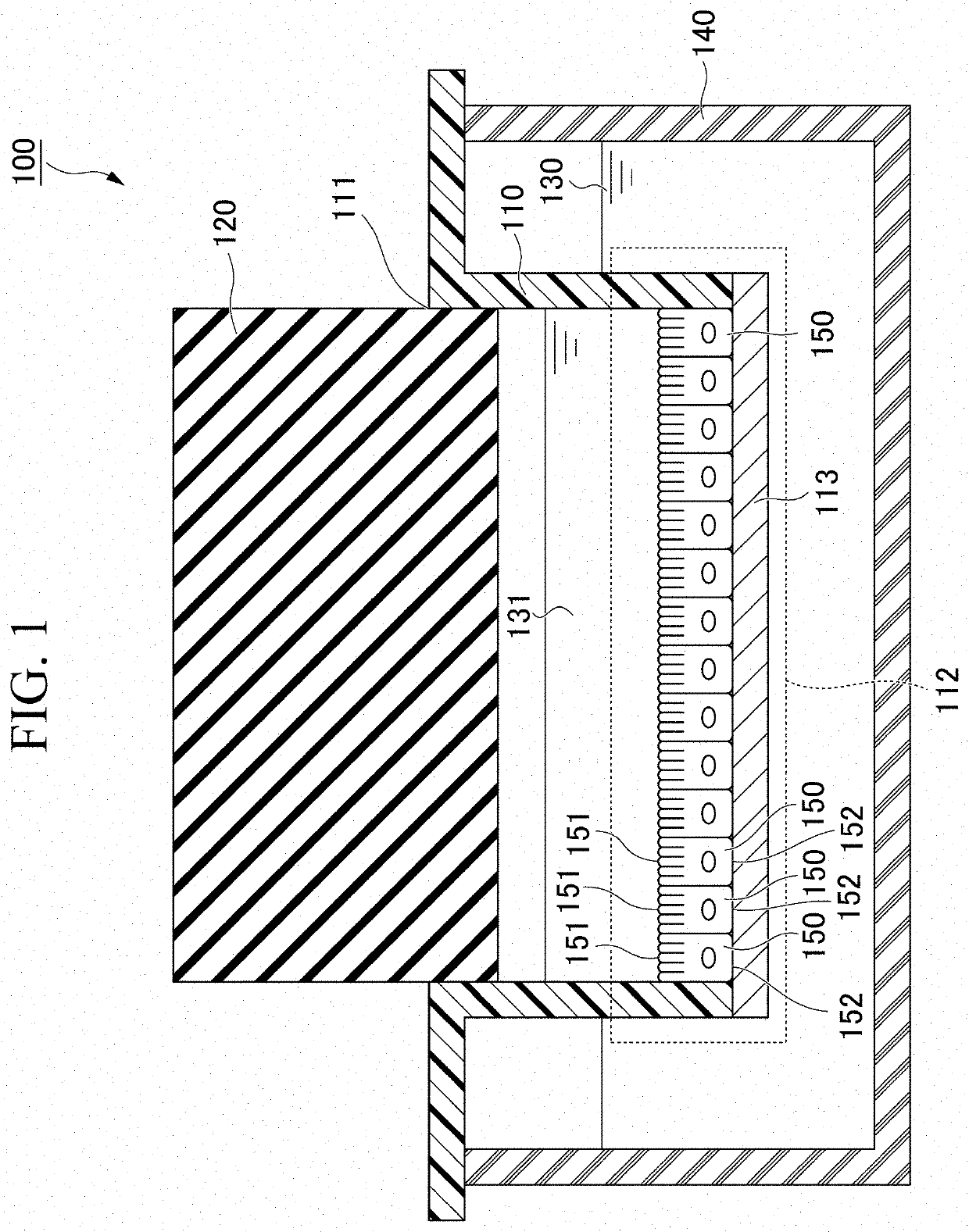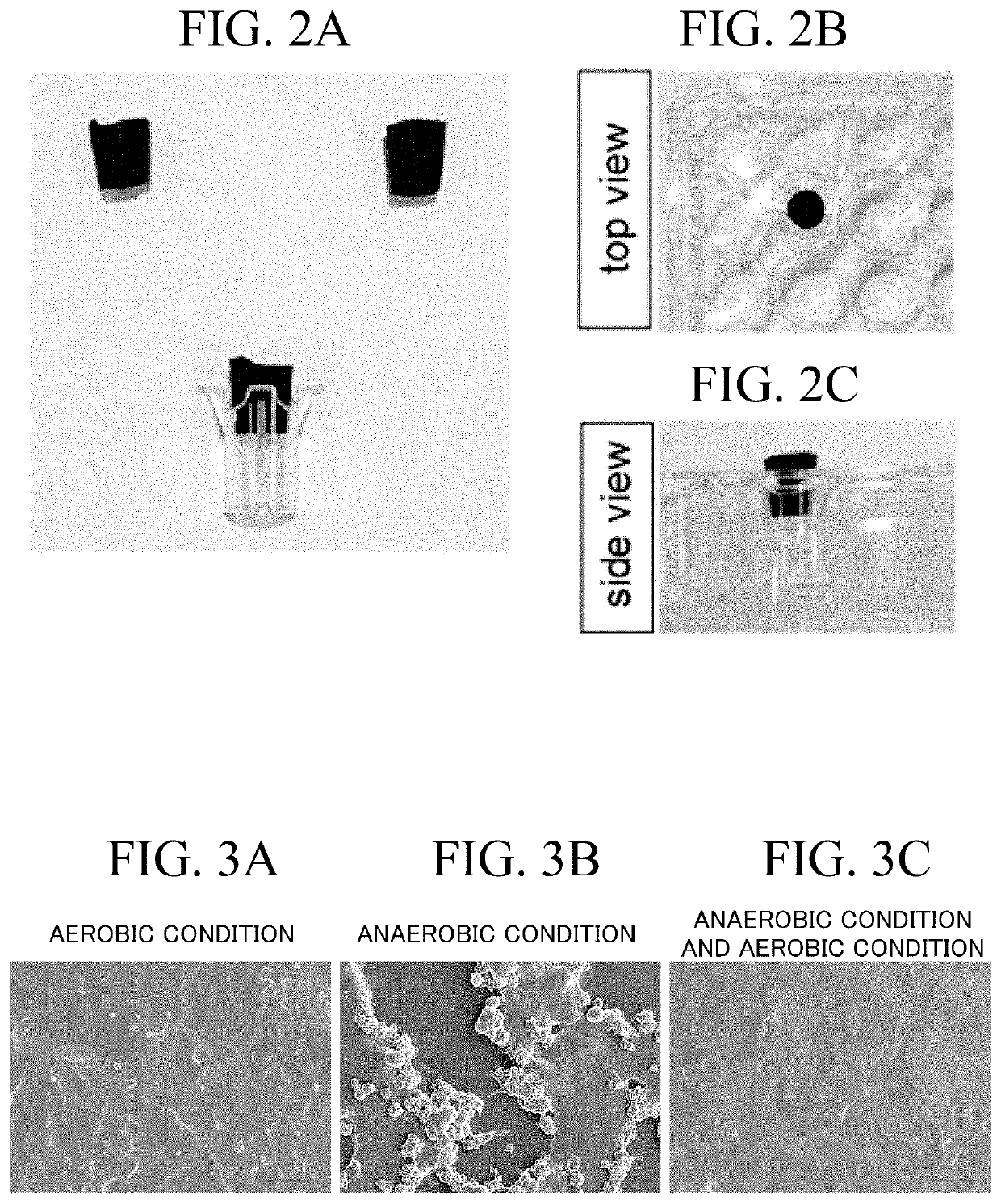Culture container for culturing epithelial cells and use thereof
a culture container and epithelial cell technology, applied in the field of culture containers for culturing epithelial cells, can solve the problems of bottlenecks in medical and biological understanding, inability to clone, and inability to artificially culture a large amount of intestinal bacteria, and achieve the effect of easy control of oxygen partial pressur
- Summary
- Abstract
- Description
- Claims
- Application Information
AI Technical Summary
Benefits of technology
Problems solved by technology
Method used
Image
Examples
experimental example 1
[0152](Culture of Epithelial Cells)
[0153]Epithelial cells were cultured using the culture container for culturing epithelial cells shown in photographs of FIGS. 2A to 2C. As the upper container, a commercially available cell culture insert (trade name “ThinCert”, Greiner Bio-One) or Transwell (trade name “Transwell”, Corning) was used. In addition, the lid member was made by self-production. A butyl rubber was used as the material of the lid member. The oxygen permeability coefficient of butyl rubber is 0.99×10−8 cm3 cm / (cm2·sec·atm). As the lower container, a commercially available 12-well plate or 48-well plate was used.
[0154]>>
[0155]As a cell culture medium, a medium in which human recombinant R-spondin 1 (manufactured by R & D systems) was added so as to have a final concentration of 1 μg / mL, Noggin (manufactured by PeproTech) was added so as to have a final concentration of 100 ng / mL, A83-01 (manufactured by Tocris) was added so as to have a final concentration of 500 nM, cultu...
experimental example 2
[0167](Measurement of Oxygen Concentration)
[0168]In the same manner as in Experimental Example 1, intestinal epithelial cells were cultured in the culture container for culturing epithelial cells shown in photographs of FIGS. 2A to 2C. The inside portion of the upper container was maintained under anaerobic conditions, and the inside portion of the lower container was maintained under aerobic conditions. For comparison, a sample in which the same operation as in Experimental Example 1 was performed except that inoculation with the epithelial cells was not performed, and a sample in which the epithelial cells were cultured without fitting the lid member to the opening portion of the upper container were also prepared.
[0169]Subsequently, 3 days after inoculating the upper container with the epithelial cells, the dissolved oxygen concentration in the cell culture medium in the upper container and the dissolved oxygen concentration in the cell culture medium in the lower container were ...
experimental example 3
[0173](Examination of 2D Organoid 1)
[0174]The intestinal epithelial cells were cultured while keeping the inside of the upper container under anaerobic conditions, using the culture container for culturing epithelial cells shown in photographs of FIGS. 2A to 2C, it was examined whether it is possible to maintain epithelial stem cells and whether it is possible to maintain differentiated cells.
[0175]First, in the same manner as in Experimental Example 1, a layer of confluent 2D organoid was formed on the surface of the upper container. Subsequently, the medium in the upper container was replaced in the anaerobic chamber. Two sets of similar culture containers for culturing epithelial cells were prepared. In one of the culture containers for culturing epithelial cells, the lid member was fitted to the opening portion of the upper container, and in the other, the lid member was not fitted to the opening portion of the upper container. These cells were incubated at 37° C. in an air envi...
PUM
| Property | Measurement | Unit |
|---|---|---|
| temperature | aaaaa | aaaaa |
| pressure | aaaaa | aaaaa |
| temperature | aaaaa | aaaaa |
Abstract
Description
Claims
Application Information
 Login to View More
Login to View More - R&D
- Intellectual Property
- Life Sciences
- Materials
- Tech Scout
- Unparalleled Data Quality
- Higher Quality Content
- 60% Fewer Hallucinations
Browse by: Latest US Patents, China's latest patents, Technical Efficacy Thesaurus, Application Domain, Technology Topic, Popular Technical Reports.
© 2025 PatSnap. All rights reserved.Legal|Privacy policy|Modern Slavery Act Transparency Statement|Sitemap|About US| Contact US: help@patsnap.com



